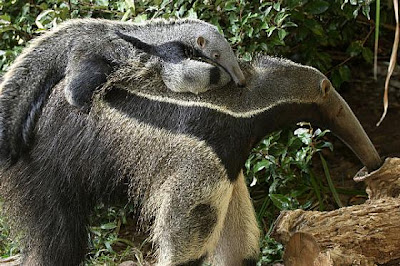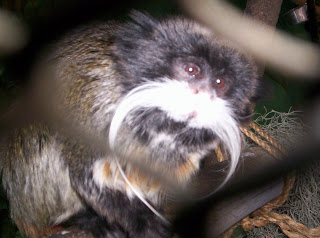FOR IMMEDIATE RELEASE - March 17, 2010
Contact: Cathi Decker
Grand Opening of a New Major Expansion at the
Santa Ana Zoo -
Tierra de las Pampas
SANTA ANA, CA – On Saturday, April 17, at 11 AM at the Santa Ana Zoo at Prentice Park, located at 1801 E. Chestnut Ave, will celebrate the Grand Opening of its spectacular “Tierra de las Pampas” exhibit.
The Tierra de las Pampas (meaning “Land of the Grasses”) exhibit occupies the northwestern corner of the Santa Ana Zoo. This is the first of four major biomes (grasslands, forests, wetlands and deserts) that will join the Crean Family Farm to establish five unique themed areas in the Zoo.
Visitors to the Zoo will encounter two new multi-species exhibits and experience the wonders of the South American grasslands. The first of these areas will house a breeding pair of
Giant Anteaters, who range from 6 to 8 feet long, weigh up to 160 pounds and have sticky tongues that can extend 24 inches outside the mouth at a rate of 150 times a minute!
The second will house the
Greater Rheas, the largest known American birds, who are flightless but have keen eyesight and hearing. Joining them will be the
Guanacos, the tallest wild mammals of South America, which can spit up to six feet with a particularly uncanny aim.
Visitors will learn to fully appreciate the “pampas” through education nodes, interpretive graphics and interactive elements (physical and tactile).
The majestic Ombu tree serves as a landmark for this beautiful realm. It can grow up to 60' tall and is a “survivor” because its wood is soft and spongy, retaining nearly 80% of available water. And it is not grazed upon because its sap is poisonous! The Pampas is considered to be one of the most endangered habitats on earth due to extensive livestock grazing and farming practices that make it one of the richest cultivated regions in the world – but that also are threats to its existence.
This endangered land will be available to guests right here in their own community when visiting the urban oasis that is the Santa Ana Zoo.
The Zoo is open from 10:00 a.m.-4:00 p.m. daily. Maps and general admission information are available on the Zoo’s website at www.santaanazoo.org. ###







